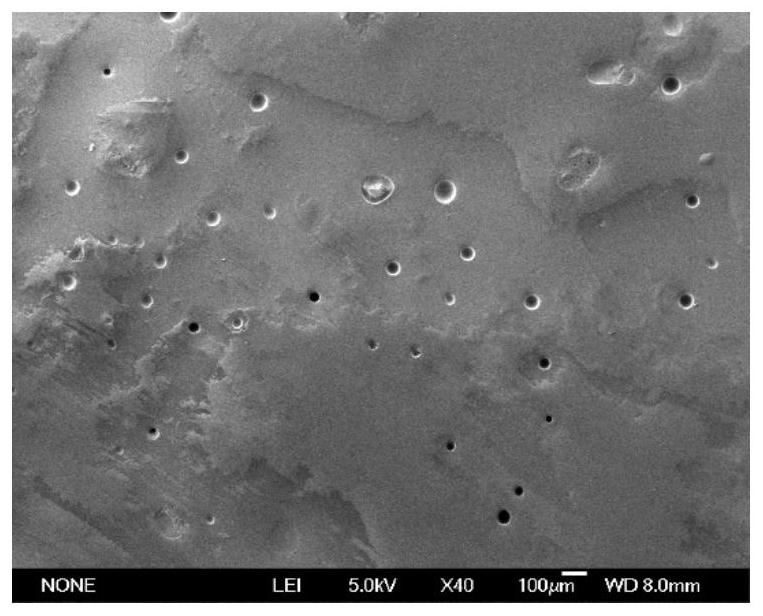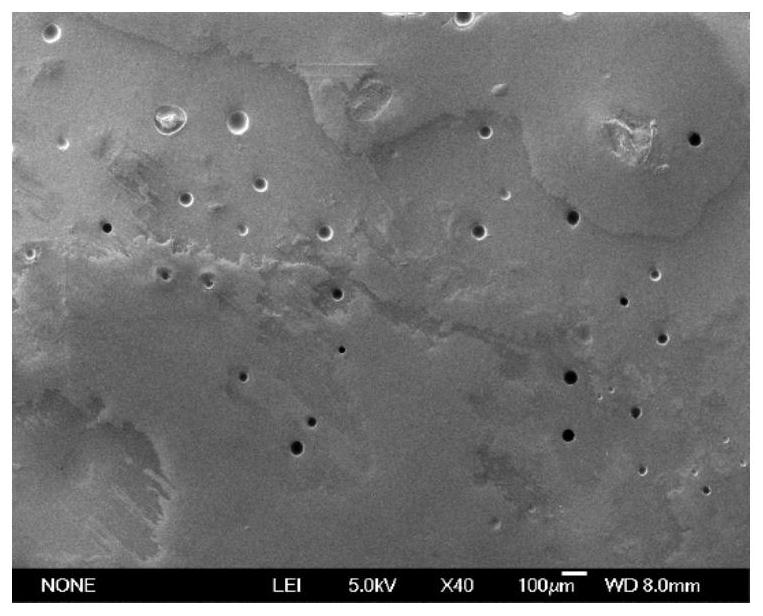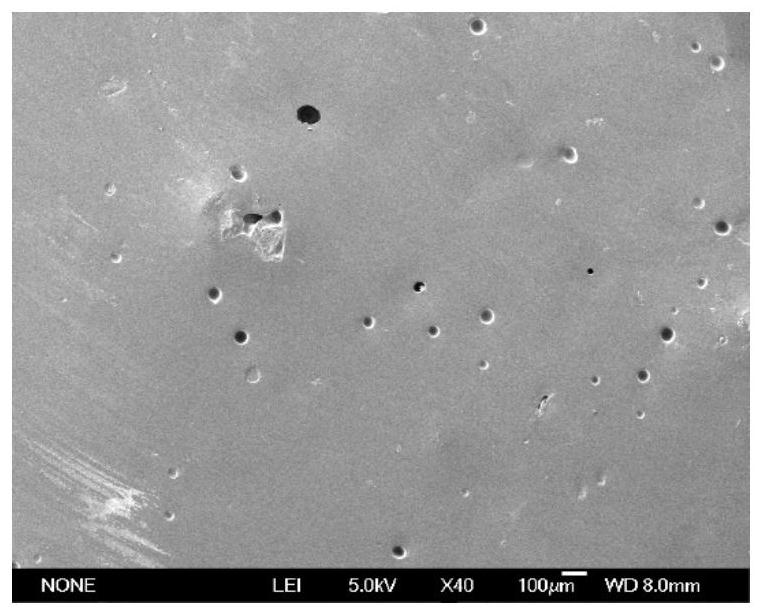Self-repairing PDMS coating and preparation method thereof
A self-healing and coating technology, used in alginic acid coatings, coatings, etc., can solve problems such as reducing the mechanical properties of substrates or coatings
- Summary
- Abstract
- Description
- Claims
- Application Information
AI Technical Summary
Problems solved by technology
Method used
Image
Examples
Embodiment 1
[0035] (1) Place 1 mg of PDMS in an oxygen environment, and use ultraviolet rays with a wavelength of 320 nanometers to irradiate the oxygen to make the oxygen generate oxygen-rich groups. After 50 minutes, put it into a 30% ethanol solution and take it out for 30 minutes; the surface of PDMS is grafted with hydroxyl ;
[0036] (2) Add PDMS with hydroxyl groups to 0.1M potassium permanganate solution and soak for 10 hours, so that hydroxyl groups are oxidized into carboxyl groups;
[0037] (3) Add 1mg of aminopolyethylene glycol hydroxyl groups to PDMS with carboxyl groups, and the carboxyl groups grafted on the surface of PDMS react to form amino groups.
[0038] (4) Mix 1mg of calcium alginate-based microcapsules and 0.4mg of EDC in 200mL of water at room temperature (20-30°C). After 2 hours, EDC reacts with the carboxyl groups of calcium alginate-based microcapsules to form amine-reactive O-acylisourea intermediate;
[0039] (5) Disperse the above O-acylisourea intermedia...
Embodiment 2
[0041] (1) Put 1 mg of PDMS in an oxygen environment, irradiate the oxygen with ultraviolet rays with a wavelength of 350 nanometers to generate oxygen-rich groups in the oxygen, and after 60 minutes, put it into a 30% ethanol solution for 30 minutes and take it out; the surface of PDMS is grafted with hydroxyl ;
[0042] (2) Add PDMS with hydroxyl groups to 0.1M potassium permanganate solution and soak for 12 hours, so that the hydroxyl groups are oxidized into carboxyl groups;
[0043] (3) Add 1mg of aminopolyethylene glycol hydroxyl groups to PDMS with carboxyl groups, and the carboxyl groups grafted on the surface of PDMS react to form amino groups.
[0044] (4) Mix 1mg of calcium alginate-based microcapsules and 0.4mg of EDC in 200mL of water at room temperature (20-30°C). After 3 hours, EDC reacts with the carboxyl groups of calcium alginate-based microcapsules to form amine-reactive Aqueous solution of O-acylisourea intermediate;
[0045] (5) Disperse the above O-acyl...
Embodiment 3
[0047] (1) Put 1 mg of PDMS in an oxygen environment, irradiate the oxygen with ultraviolet rays with a wavelength of 380 nanometers to generate oxygen-rich groups in the oxygen, and after 90 minutes, put it into a 30% ethanol solution and take it out for 30 minutes; the surface of PDMS is grafted with hydroxyl ;
[0048] (2) Add PDMS with hydroxyl groups to 0.1M potassium permanganate solution and soak for 15 hours, so that hydroxyl groups are oxidized into carboxyl groups;
[0049] (3) Add 1 mg aminopolyethylene glycol hydroxyl group to the PDMS solution with carboxyl groups, and the carboxyl groups grafted on the surface of PDMS react to form amino groups.
[0050] (4) Mix 1mg of calcium alginate-based microcapsules and 0.4mg of EDC in 200mL of water at room temperature (20-30°C). After 3 hours, EDC reacts with the carboxyl groups of calcium alginate-based microcapsules to form amine-reactive Aqueous solution of O-acylisourea intermediate;
[0051] (5) Disperse the above ...
PUM
| Property | Measurement | Unit |
|---|---|---|
| The average particle size | aaaaa | aaaaa |
| Tensile strength | aaaaa | aaaaa |
Abstract
Description
Claims
Application Information
 Login to View More
Login to View More - R&D
- Intellectual Property
- Life Sciences
- Materials
- Tech Scout
- Unparalleled Data Quality
- Higher Quality Content
- 60% Fewer Hallucinations
Browse by: Latest US Patents, China's latest patents, Technical Efficacy Thesaurus, Application Domain, Technology Topic, Popular Technical Reports.
© 2025 PatSnap. All rights reserved.Legal|Privacy policy|Modern Slavery Act Transparency Statement|Sitemap|About US| Contact US: help@patsnap.com



